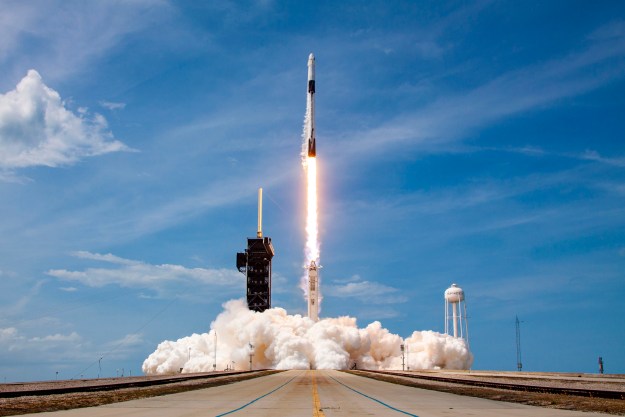United Launch Alliance (ULA) has scrubbed the planned launch of its powerful Delta IV Heavy rocket just seconds before takeoff early on Saturday, August 29. The launch was set to go ahead from Complex-37 at Cape Canaveral on Friday at 11:04 p.m PT, with the launch window open until 3:25 a.m. PT Saturday.
Mission NROL-44 was supposed to depart Cape Canaveral in Florida on Thursday morning, but the countdown clock had to be halted while the team worked to resolve an issue on the launchpad. A short while later, the launch effort was called off for the day after the discovery of another technical problem that couldn’t be fixed within the remainder of the four-hour launch window.
The launch was pushed to late Friday night but was aborted with seconds to go. “The launch of a United Launch Alliance #DeltaIVHeavy carrying the #NROL44 mission for the National Reconnaissance Office was scrubbed today due to an unexpected condition during terminal count at approximately three seconds before liftoff,” ULA announced on Twitter.
The launch of a United Launch Alliance #DeltaIVHeavy carrying the #NROL44 mission for the National Reconnaissance Office was scrubbed today due to an unexpected condition during terminal count at approximately three seconds before liftoff.
— ULA (@ulalaunch) August 29, 2020
On its website, ULA announced that the scrub was “due to an unexpected condition during terminal count at approximately three seconds before liftoff.” CEO of ULA, Tony Bruno, said that the rocket was in good shape and that the automatic abort seemed to have been caused by an error in the ground system.
ULA also shared that “[t]he team is currently reviewing all data and will determine the path forward” and some details about rescheduling the launch, saying that, “[t]he required recycle time prior to the next launch attempt is seven days minimum.” No further information about the rescheduling of the launch has been announced at this time.

The mission was to carry into space a classified payload for the National Reconnaissance Office (NRO), the U.S. government’s spy satellite agency.
The launch would mark the 141st mission for ULA and the 29th for the NRO. It would also be the 385th Delta launch since 1960, the 12th Delta IV Heavy, and the 8th Heavy for the NRO, the Colorado-based company said.
The awesome rocket features three booster cores for extra power to deploy the satellite into a higher orbit. It’s the largest rocket in ULA’s fleet and the second most powerful rocket in service today after SpaceX’s Falcon Heavy.
Update 29 August: Added information about scrubbing of launch.
Editors' Recommendations
- Watch ULA’s triple-booster Delta IV Heavy roar to space for the final time
- Final Delta IV Heavy launch scrubbed minutes before liftoff
- ULA sets date for final rocket flight of ‘the dependable Delta’
- Historic moon mission launches successfully from Kennedy
- How to watch the first U.S. commercial moon mission launch tonight


